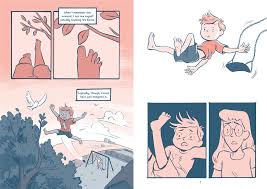The Association for Mormon Letters’ AML Awards were presented at the Association for Mormon Letters/Mormon Scholars in the Humanities Conference Awards Ceremony, May 30, 2025, at Snow College, Ephraim, Utah. Below is each award winner, along with the award citation written by the judges.
Garrett Batty was presented with the Smith-Pettit Foundation Award for Outstanding Contribution to Mormon Letters. Glen Nelson was presented with Association for Mormon Letters Lifetime Achievement Award. See the links for the award citations and interviews about their careers.
Comics
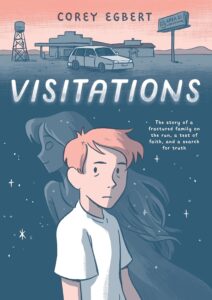 Corey Egbert. Visitations. Farrar, Straus and Giroux.
Corey Egbert. Visitations. Farrar, Straus and Giroux.
Other finalists:
Brittany Long Olsen. The Happy Shop
Jake Parker. Ryder’s Intergalactic Guide to Robots
Patrick Scullin. Stray: Toaster Trouble
Creative Nonfiction (book)
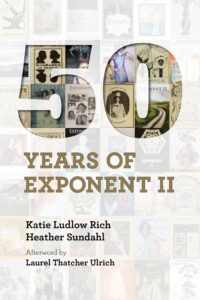 Katie Ludlow Rich and Heather Sundahl, editors. Fifty Years of Exponent II. Signature Books.
Katie Ludlow Rich and Heather Sundahl, editors. Fifty Years of Exponent II. Signature Books.
The concept for Fifty Year of Exponent II (2024) may seem simple—something achievable, perhaps, through a well-wrought AI prompt: “In a celebratory tone, historicize and provide a representative sample of key contributions to this germinal publication.” In the hands of author-editors Katie Ludlow Rich and Heather Sundahl, however, this book far exceeds a simple concept or computation. The result of their research, writing, and curation is a tribute to a publication that has made substantial contributions to Mormon culture and history. Rich and Sundahl’s treatment of Exponent II both documents and develops issues of gender in a highly gendered culture and religion, assembling and amplifying generations of voices beginning in what is known as the second wave of US feminism and ranging into today’s global, intersectional gender complexities. Their presentation is diverse yet coherent, grounded but not mired in Exponent II’s foremothers, and introducing highlights of the publication in a single volume readily available for women and others who need it today or will need it tomorrow.
This hybrid work of history and literature, research and creation, re-launches the vibrant, ever-relevant forum of Exponent II into the medium of books. We are pleased to provide thrust to this launch by awarding Rich and Sundahl and decades of contributors with the Association for Mormon Letters 2025 award for Creative Nonfiction (book).
Other finalists:
Nathan Kitchen. The Boughs of Love. BCC Press
Kerry Spencer Pray, editor. The Book of Queer Mormon Joy. Signature Books
Creative Nonfiction (essay)
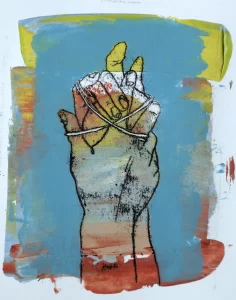 Melissa Wei-Tsing Inouye. “A Church That is Real“. Wayfare, January 2025
Melissa Wei-Tsing Inouye. “A Church That is Real“. Wayfare, January 2025
This eloquent essay repeats some of the themes Melissa Inouye shared in her 2023 book Sacred Struggle, about the need to accept diversity and disagreement among one’s fellows, as well as a smattering of cognitive dissonance in gospel matters in order to “struggle mightily with life’s puzzles, thereby exercising our divine capacity.” She maintains that “If our Heavenly Parents had intended for everyone to think alike and to follow the same path back to them, they could have endorsed Lucifer’s plan. Instead they gave us the power of agency, which is the power to make terrible mistakes and cause lasting damage. But it is also the power to be brave, to be wise, to extend the self, and to be a true healer.” What a terrible loss that this may be one of Melissa’s last published pieces, as she passed away on April 23, 2024, at age 44. She is greatly missed.
Other finalists:
W. Paul Reeve. “Washing the Clay from my Eyes“. Wayfare
Joanna Harmon. “The Faith of a Stiff-Necked Woman“. Wayfare
Dani Westwind Blatter Macarthur. “Born Again: Transgender Insights on Spiritual Rebirth“. Exponent II
Criticism
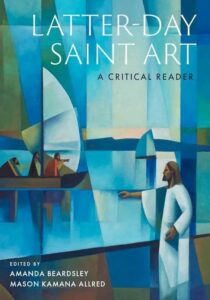 Amanda Beardsley and Mason Allred, editors. Latter-day Saint Art: A Critical Reader. Oxford University Press
Amanda Beardsley and Mason Allred, editors. Latter-day Saint Art: A Critical Reader. Oxford University Press
For insiders, the invocation of “Latter-day Saint art” typically conjures familiar prints hung on the burlap walls of a meetinghouse; for outsiders, the category may seem like a contradiction in terms. Various individuals and organizations, including inter alia the Center for Latter-day Saint Arts and the Book of Mormon Art Catalog, have labored over the past decade to bring the full range of Mormon art to the awareness of the public. A conspicuous absence in this endeavor has been a mature and critical understanding through which to evaluate and contextualize works of Mormon art. The landmark volume Latter-day Saint Art: A Critical Reader has filled this gap with twenty-two scholarly essays exploring Mormon visual art in unprecedented breadth and depth. Editors Amanda Beardsley and Mason Allred have gathered original curatorial research and analysis from a range of disciplinary perspectives, alongside attractive reproductions of more than 200 works spanning panorama paintings, quilts, architecture, sculpture, cartoons, film, gallery installations, and indigenous works. Essays by Terryl Givens on Mormon theology of aesthetics, Heather Belnap on women artists and travel, Glen Nelson on modernism, and Mary Campbell on an historic photograph of Brigham Young’s daughters merit special commendation for stylistic excellence in criticism as literary genre in itself, using description of visual art as the occasion for essayistic discovery. This groundbreaking collection represents the first expert critical treatment of Mormon visual art and establishes a solid foundation not only for future scholarship but for Latter-day Saint self-understanding writ–or drawn–large.
Other finalists:
Lee Allred. “No Truth in Beauty? Harriet Stark and The Bacillus of Beauty”
Michael Austin. The Testimony of Two Nations: How the Book of Mormon Reads, and Rereads, the Bible
Colleen McDannell. “Contemporary Temple Art and Landscapes of the Sacred.”
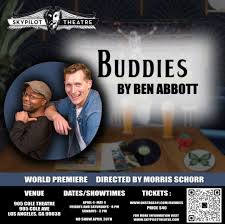 Drama
Drama
Ben Abbott. Buddies: A Bromantic Comedy. Santa Maria Civic Theatre, Santa Maria, California, November 2024. SkyPilot Theatre Company, Los Angeles, April-May 2025.
Buddies: A Bromantic Comedy is a side-splitting comedy with a deep dramatic core about the difficulty of finding adult friendship. It is filled with a sharp wit and a sense of timing and insight that very few writers possess. There is a keen sense of dramatic structure with charming character development and naturally flowing dialogue that leads the reader through this budding relationship. Buddies matches the romantic comedy trope perfectly, making the journey of the protagonist, David, very satisfying for the viewer (or reader).
Beyond the comedy or the story, Buddies also highlights an issue that can go undetected in today’s society and especially in LDS culture, the need for men, who may be devoted fathers and husbands, to have friends outside of their family. The play expertly diagnoses this essential issue and showcases how difficult it can be to find a best friend when you’re married and have kids. To watch David and Adam form a bond of friendship, you feel like you’ve watched two characters really accomplish something difficult. This play brings the humor and heart of this issue to new levels mixing a deep understanding of human relationships with the craft and expertise of a comedian to create a delightful experience for an audience.
Other finalists:
J. Scott Bronson. Mothers of Zion. Published in Sing of Greater Things: A Messiah Trilogy
Mahonri Stewart. Secrets of Sleepy Hollow
Kim Abunuwara, director and compiler. In Good Faith
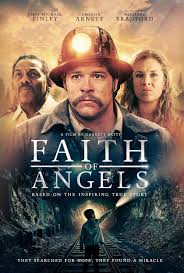 Film
Film
Faith of Angels. Garrett Batty, director, writer, producer.
Faith of Angels is a heartfelt and inspirational movie that makes us believe miracles truly do occur. Excellent cinematography and strong performances are elevated even further by director Garrett Batty’s deep talent and experience. There is a tangible sense that the cast and crew really cared about this story and the real people it’s based on, and put their hearts into sharing this experience with the audience.
Other finalists:
The Angel. Barrett Burgin and Jessica Burgin, directors
Escape from Germany. T. C. Christensen, director
Middle Grade Literature
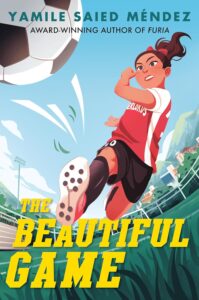 Yamile Saied Méndez. The Beautiful Game. Little, Brown Books for Young Readers
Yamile Saied Méndez. The Beautiful Game. Little, Brown Books for Young Readers
GOAL!!! This is the book girls and women have been wanting for generations. THE BEAUTIFUL GAME is sure to score with readers young and old. Told with the perfect blend of sensitivity, honesty, and humor, the important themes of girls’ puberty, girls’ athletics, diversity, friendship, and complex family relationships team up to create a can’t-put-it-down winner.
Other finalists:
Josh Allen. Once They See You: 13 Stories to Shiver and Shock
Sarah Allen. Monster Tree
Jennifer A. Nielsen. Uprising
Jason F. Wright. Scar Dakota
Novel
 James Goldberg, Nicole Wilkes Goldberg, and Mattathias Singh. Tales of the Chelm First Ward. BCC Press
James Goldberg, Nicole Wilkes Goldberg, and Mattathias Singh. Tales of the Chelm First Ward. BCC Press
Tales of the Chelm First Ward is a loving and highly amusing tribute to the ward family, even and especially a family that is knit of fools. The Chelm-ites’ foibles and idiosyncrasies provide welcome opportunities to indulge in the happy collisions of Jewish and Mormon ways of seeing and to check assumptions about the unwritten order of things. The Chelm stories are at once hyperlocal and applicable to any ward family or gathering of not-at-all perfect humans joined by both love and happenstance. Partly born of the COVID-19 pandemic, the novel depicts the joy, absurdity, and absolute necessity of the “shared but barely-governed spaces” in which people have “chances to run into each other by accident, especially when they would never do it on purpose” (370).
Other finalists:
Mary Clyde. Journeys from a Desert Road
Ally Condie. The Unwedding
H. D. Logic. Of the Noble and Great Ones
Picture Book
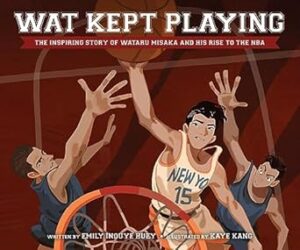 Emily Inouye Huey. Illustrated by Kay Kang. Wat Kept Playing: The Inspiring Story of Wataru Misaka and his Rise to the NBA. Shadow Mountain
Emily Inouye Huey. Illustrated by Kay Kang. Wat Kept Playing: The Inspiring Story of Wataru Misaka and his Rise to the NBA. Shadow Mountain
Picture books are a great way to introduce young children to history and biography. Simple sentences and engaging illustrations offer a bite-sized introduction to a person’s life, whether famous or relatively unknown. Wataru Misaka is in the latter group. Born in Utah to 1st-generation Japanese immigrants, he was a basketball-loving teenager when the United States entered World War II. In the midst of an atmosphere of anti-Japanese sentiment, Misaka made it on to the 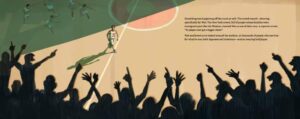 University of Utah basketball team, winning two national tournaments. He later became the first person of color to be drafted into the BAA (precursor to the NBA), although that achievement was not noted at the time. Wat Kept Playing reminds us that everyday actions—like practicing basketball—can also be acts of bravery. In addition, trailblazing achievements sometimes go unrecognized until many years later. This year, the Association for Mormon Letters celebrates the fact that Emily Inouye Huey and Kaye Kang keep writing and drawing.
University of Utah basketball team, winning two national tournaments. He later became the first person of color to be drafted into the BAA (precursor to the NBA), although that achievement was not noted at the time. Wat Kept Playing reminds us that everyday actions—like practicing basketball—can also be acts of bravery. In addition, trailblazing achievements sometimes go unrecognized until many years later. This year, the Association for Mormon Letters celebrates the fact that Emily Inouye Huey and Kaye Kang keep writing and drawing.
Other finalists:
Nicole Clark, Illustrated by Alyssa Stevenson. Welcome to the Temple
Amber Corkin, Ashley LeBaron-Black, Aubri Robinson. Jesus Felt It Too
Yamile Saied Mendez. Illustrated by Sara Palacios. Pockets of Love
Shawna J. C. Tenney. Anonymoose
Poetry
 Maureen Clark. This Insatiable August. Signature Books
Maureen Clark. This Insatiable August. Signature Books
This Insatiable August is a meditative work of discovery and beauty, a wrestle with love and grief. Many of the poems engage directly with Clark’s own Latter-day Saint heritage as well as her departure from the faith. “Please, someone fill this God-shaped hole in me,” pleads the speaker in “Holes,” a poem about loss and the possibilities it creates: “Now that I am empty, / measure the cups of star dust I am made from. / Please, craft a bucket from my chest.” But while Clark’s poems have a yearning for God, family and ancestral bonds provide comfort and hope: “See how he rolls a cigarette, / my dead grandfather? / He licks the edge of the paper / and twists the ends. / Smell the sulfur of the match. / The red glow, there, across the room. / Until morning, trust in that.” These are among the many images, rendered in precise and beautiful language, that make This Insatiable August such a soul-searching expression of faith.
Other finalists:
Lance Larsen. Making a Kingdom of It
Laura Stott. The Bear’s Mouth
Lindsey Webb. Plat
Darlene Young. Count Me In
Religious Nonfiction
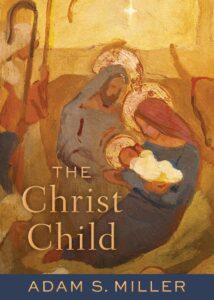 Adam S. Miller. The Christ Child. Deseret Book
Adam S. Miller. The Christ Child. Deseret Book
In The Christ Child, Adam Miller takes the reader on a visionary exploration of the meaning of Christmas. Just as children await Christmas with wondrous awe, Miller invites the reader to experience Christianity with the same sense of awe. It is with awe that the magi sought the Christchild and Mary held the savior of the world in her arms. The gospel that Miller presents is one of childlike simplicity, a “new variation on old themes,” standing out amongst the busyness of contemporary Christian discipleship. Miller taps into the core of Latter-day Saint theology: that we are children of loving heavenly parents, and that by emulating the childlike qualities of Christ, a new world of possibilities opens before us.
Other finalists:
Mason Kamala Allred. Seeing: Themes in the Doctrine and Covenants
Deidre Nicole Green and Eric D. Huntsman, editors. Latter-day Perspectives on the Atonement
Nate Oman. Law and the Restoration: Law and Latter-day Saint Thought and Scripture
Taylor G. Petrey. Queering Kinship in the Mormon Cosmos
Short fiction
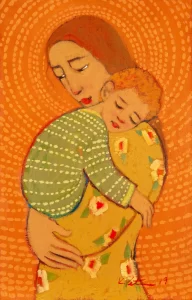 Jack Harrell, “The Boy Comes Home”. Wayfare, February
Jack Harrell, “The Boy Comes Home”. Wayfare, February
In “The Boy Comes Home,” Jack Harrell skillfully reimagines the Prodigal Son’s parable’s central dramatic moment—that of the wandering child’s return. In Harrell’s story, the anxiously waiting parent is not a father, but a now-divorced mother, the story told from her perspective, set in her empty nest. This visit is not the permanent homecoming suggested in Luke, but merely a tentative and temporary stop-over (the son “can only stay a few minutes”). She is nervous and fussing nonetheless. It has been some time since her son has come home.
As to the nature of the son’s “straying,” he has deviated, not from the general obligations and reputation of a wealthy household, but, starting in his middle teens, from the mother’s ideal of a mother-son relationship. This straying is part of her larger disillusionment with temple marriage and the promise of happiness in an eternally bound family. The mother’s wait for his arrival is marked by guilt for whatever part she might have played in his estrangement from her, and with the worry that her offering—her ambiguous, but nevertheless understandable, petitioning—will prove inadequate.
But in fact those efforts—motivated, and accepted, by love—do prove adequate to the moment, a resulting story that is tender, poignant, powerful, and hopeful. With his artful rendering of such a parent-child homecoming, Jack Harrell invites us to reexamine what has been lost and what can be found again.
Other finalists:
Samantha Hastings, “Pistol of Peace”. Segullah
Michael A. Hooten, “Blonde and Blue”. In Pinup Noir
Dennis Read, “Unclean Money”. Irreantum
Tamara Pace Thomson, “Sonya“. Dialogue: A Journal of Mormon Thought
Short Fiction Collection
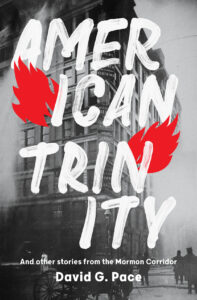 David G. Pace. American Trinity and Other Stories from the Mormon Corridor. BCC Press
David G. Pace. American Trinity and Other Stories from the Mormon Corridor. BCC Press
In American Trinity, Pace deftly dissects the cozy platitudes and idiosyncrasies of our faith. He knows the people of “The Corridor”—multigenerational descendants of Mormon pioneers—and what makes them dyed in the wool. Pace writes of their complications, secret sorrows, and peculiar pains. His stories spring from a well of heartbreak and humor, frighteningly familiar but fresh: a childless wife tries to rediscover temple work by performing ordinances for a dead movie star; a married couple quibbles over the spiritual implications of a presidential election; a General Authority grapples with sorrow and disillusionment in his new calling. And in the masterfully executed title story, “American Trinity,” one of the Three Nephites goes rogue, searching for the lost God he once knew and loved.
In elegant prose laced with stunning metaphors, Pace explores themes that resonate with readers of all stripes: love, friendship, faith, sacrifice, family, death, duty. But the common thread that speaks to the heart of LDS culture is disappointment. What happens when the grand visions of exaltation, godhood, and eternal families collide with overzealous meter-maids, Sunday School burglars, and the screams of horrified children leaping from a burning building? What happens when the Covenant Path is impassable, and disappointment spawns disillusionment, and liberation means having the courage to walk away? Or in the words of a soon-to-be ex-missionary: “Mormonism may be a beautiful thing, you know. It just can’t be what it has always claimed to be. And no one here wants to hear that.”
Pace’s characters are all wanderers who find religion “pure and undefiled” not in the sterile confines of a building, but in the daily grit and grime of the Wasatch Front. For Pace, goodness prevails over to-do lists, blind obedience breeds spiritual paralysis, certainty is sin, and doubt is an essential virtue. In a crisis, “the regularity of church meetings” should be, “torn to shreds as everyone drops their scriptures for a shovel.” In true Zion, “the only unforgivable sin is to dismiss someone else’s pain.”
This landmark collection is not a sucker punch though Pace hits us in tender places but never with malice. We smile and salute the genius of it, even when we disagree. Here we do agree with another Pace character: “What I want is not the same as what I need.”
Other finalist:
Ryan Habermeyer. Salt Folk
Young Adult Novel
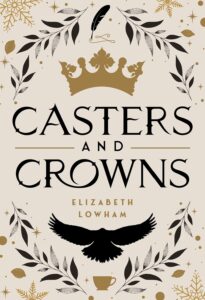 Elizabeth Lowham. Casters and Crowns. Shadow Mountain
Elizabeth Lowham. Casters and Crowns. Shadow Mountain
(Citation forthcoming. For now, here is the publisher’s blurb.)
When Crown Princess Aria sees her kingdom on the brink of war with the magic-wielding Casters, she takes it upon herself to speak with the Widow Morton, the most dangerous Caster in the realm. If successful, Aria will not only ensure peace but also prove to her father that she is a worthy heir. But when her negotiations fail, Aria is dealt a terrible curse: Over the course of one hundred days, she will be unable to sleep, her body and mind doomed to waste away. And then the curse will pass to her sister, until every member of the king’s line is dead. Aria’s best hope for breaking her curse is to seek help from another Caster—the handsome and charming Baron Reeves. He may be entitled to a place at the court, but as a magic user, can he truly be trusted? She vows not be fooled by his dimpled smiles or his devotion to his brothers, but as she spends more time with him, she discovers that her heart has other ideas.
Other finalists:
Lynn Buchanan. The Dollmakers
Emily Cox and Nicole Allen. The Other Side of Together

